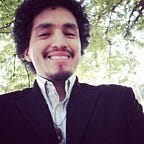A Language of Care, Intimacy, and Animacy
Language is Power, language is a tool, language is Being, a reflection, intention, and manifestation of relationship with the world.
In our work, we sometimes ask the question “In service of what?” to pause and reflect on the intention, purpose, and potential impact of an action or approach.
This is especially helpful when questions come up that feel they are restricted to binary outcomes. “What is the right term to use? Should I say this? Do I use that word?”
Mind you, there are still relatively clear moments when there is a correct and incorrect answer, and even something “right” compared to “wrong.”
But by taking a moment when possible and applicable to reflect on the service of a space, on the intention of tools, and the ownership of impact, I find it helps push my growth, avoid amplifying spaces of harm, and open my awareness to ongoing other ways of knowing.
I use colonizer languages in the form of English and Spanish. Part of my reality is having a heritage that is colonizer and colonized. I could have that be a circular debate of shame, guilt, and inaction, and sometimes that comes up through allyship and accomplice-ship work.
Two points of reflection that have been guiding me working through that cognitive and socioemotional struggle are ideas by bell hooks and Robin Wall Kimmerer — — thinking about a Language of Intimacy and a Language of Animacy.
Jené Gutierrez writes “Words are not merely names or parts of a sentence structure; they represent a dynamic of power relations. They do not exist in a vacuum; they are connected to our relationships. How we communicate language is a social process.”
She goes on to note how bell hooks stated “Standard English is not the speech of exile. It is the language of conquest and domination; in the United States, it is the mask which hides the loss of so many tongues, all those sounds of diverse, native communities we will never hear…” and the role of linguistic prescriptivism before arriving at only one such commandment: “Thou shalt not use language to harm.” Especially in light of “our current moment, one in which people are policing language for the ways in which it represents the world and the people in it, the ways in which it perpetuates or dismantles power which subjugates and dehumanizes.”
So I think about hook’s Language of Power and the role and desire for Intimacy. How in following “thou shalt not harm” how we can use language, even a colonizer tongue, to strive toward more healing and restoration through its use of intimacy.
This is where Dr. Kimmerer’s language and “grammar of animacy” also plays a role, especially as she notes “I think the most profound act of linguistic imperialism was the replacement of a language of animacy with one of objectification of nature, which renders the beloved land as lifeless object, the forest as board feet of timber.”
While acknowledging a host of challenges, she wonders how this could be “medicine for a broken world” which I connect to hook’s statement of “to heal the splitting of mind and body, we marginalized and oppressed people attempt to recover ourselves and our experiences in language. We seek to make a place for intimacy.”
I connect these to be a Language of Care, one where words are used in service of reconnection, relationship, and the accountability that comes with interdependence. Which takes the real pain and harm and holds it to a space and healing. As Jene Gutierrez states “there is no “correct” language, only thoughtful and careful language. Language informed by its history. Compassionate language. Language which invites rather than excludes. Language which, most importantly, evolves.”
This of course can be easier said than done. But as we too easily can wield language as a weapon in the many ways we have before, how do we use a language of intimacy and animacy to continue to move a broken and breaking world towards a healing and liberating one?
